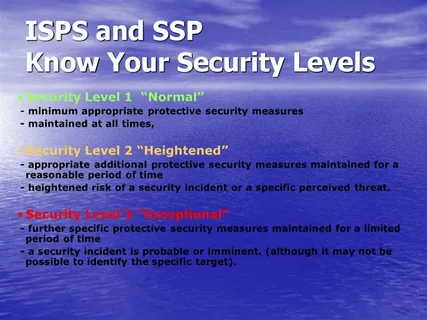A well-written System Security Plan (SSP) is often treated as paperwork, yet it serves as the backbone of any defensible compliance effort. Contractors preparing for a CMMC assessment quickly learn how tightly an SSP is examined by assessors. A plan that accurately reflects the environment and the CMMC Controls strengthens credibility long before the formal review begins.
SSP contents must mirror actual system functions for audit-ready credibility
An SSP is meant to describe how systems truly operate—it cannot rely on assumptions, outdated practices, or generic statements. Assessors expect the document to match real configurations, workflows, and implemented CMMC security measures. This alignment shows that the organization understands its environment and can clearly explain how it meets the CMMC compliance requirements. Contractors preparing for CMMC level 1 requirements often underestimate how much detail an assessor expects to see, especially relating to functional accuracy. Auditors compare SSP descriptions to live demonstrations during a C3PAO assessment. If the written plan aligns with actual system behaviors, the review progresses smoothly. If not, credibility erodes quickly. Matching the SSP to real system functions is a foundational part of preparing for CMMC assessment activities, ensuring no surprises surface during a CMMC Pre Assessment or full evaluation.
Misaligned SSP language triggers assessor doubts about control implementation
Assessors read between the lines. If the SSP language feels vague, inconsistent, or disconnected from actual configurations, doubts arise about whether controls are genuinely implemented. A mismatch often signals rushed documentation—one of the Common CMMC challenges that can stall an audit. Even small discrepancies can cause assessors to question whether the environment has been properly reviewed or maintained.
Once doubts appear, assessors begin requesting deeper evidence and additional demonstrations. This increases assessment time, expands the scope of questioning, and elevates overall scrutiny. Contractors working with CMMC consultants quickly discover that misaligned language is viewed as a reliability issue, not a clerical one, highlighting why accurate, control-specific wording matters.
Linking each control statement to measurable evidence builds assessment strength
For each control, the SSP must describe not only the process but also where the supporting evidence lives. An assessor should be able to trace each statement to logs, screenshots, system settings, or activity records. This approach reduces confusion and speeds verification. Evidence mapping is central to CMMC level 2 compliance because assessors expect clear documentation showing that controls operate consistently.
Well-mapped evidence becomes especially important during a CMMC Pre Assessment. It provides an early indication of readiness and exposes gaps long before the official audit. Clear linkage between controls and evidence also helps consultants performing CMMC compliance consulting coordinate remediation work efficiently, avoiding bottlenecks during the final review.
Clear boundary definitions in your SSP prevent scope misunderstandings
Boundary clarity determines what is in scope—and what is not—during a CMMC assessment. The SSP must outline system segments, networks, user groups, and CUI locations in a way that aligns with the CMMC scoping guide. Without accurate boundaries, assessors may expand their inquiry beyond the intended environment, increasing both time and cost. A well-defined boundary also helps assessors understand how CUI moves through the system. This prevents misinterpretation about which controls apply where. Contractors who prioritize boundary clarity typically experience fewer surprises during their Intro to CMMC assessment and find it easier to justify the scope they present.
Ownership assignments in the SSP show who drives each control end-to-end
Control ownership signals accountability. An assessor must see who is responsible for maintaining, monitoring, and validating each requirement. Assigning ownership in the SSP shows that the organization has an internal structure and understands operational responsibilities tied to CMMC Controls.
These assignments also help internal teams stay aligned while preparing for CMMC assessment milestones. Ownership reduces confusion and ensures communication flows efficiently during remediation and evidence collection. It also demonstrates governance maturity, which assessors consider a key indicator of long-term compliance sustainability.
Up-to-date SSP entries reflect live operations, not outdated procedures
An outdated SSP is one of the most common issues seen during assessments and instantly undermines credibility. Processes change, tools evolve, and teams adopt new workflows. The SSP must keep pace with these updates. Assessors expect documentation to reflect the environment as it exists during the audit, not as it existed a year ago.
Maintaining a current SSP is also part of ongoing compliance—not just an assessment exercise. Government security consulting teams frequently find that outdated documentation causes delays, forcing contractors to re-write large sections during the assessment window. Keeping the SSP updated throughout the year prevents rushed edits and reduces audit risk.
Mapping mitigation strategies in the SSP adds clarity for partially implemented controls
Not all controls are fully implemented at the moment the SSP is drafted. In such cases, mitigation strategies must be documented clearly and accurately. This demonstrates transparency and allows assessors to understand how the organization plans to meet full compliance. The SSP should outline the mitigation steps, timelines, and compensating processes already in place.
This level of clarity supports a realistic assessment of CMMC level 2 requirements. It also helps CMMC RPO partners prioritize remediation tasks efficiently. Assessors are far more comfortable with well-explained partial implementations than with vague or missing details.
Consistent terminology across SSP and evidence strengthens compliance coherence
Terminology matters more than contractors expect. If system names, user roles, control references, or policy titles differ between the SSP and provided evidence, assessors may question whether documents are accurate or up to date. Consistency signals maturity and reduces confusion during cross-reference checks. Maintaining alignment across all documentation sets also prevents unnecessary reassessment of controls. CMMC consultants often stress that coherent terminology makes the environment more understandable, easing validation for both internal teams and the C3PAO assessor.
MAD Security supports contractors with SSP development, evidence alignment, scoping accuracy, and end-to-end guidance that strengthens audit readiness through detailed, fact-driven compliance consulting.


